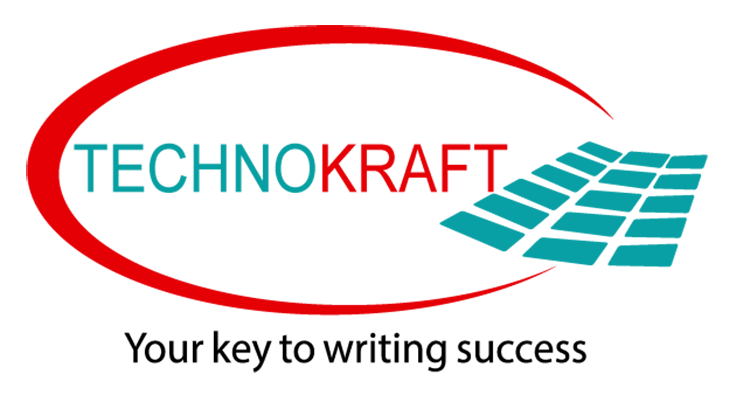
Mastering the Shift: Your Complete Guide to Getting Into Technical Writing
Mastering the Shift: Your Complete Guide to Getting Into Technical Writing
Getting into Technical Writing Career Guide has become one of the smartest career moves in today’s digital world. Companies need clear instructions, accurate documentation, and user-friendly guides. As a result, skilled technical writers are in high demand. Although many people believe this field requires deep engineering knowledge, the truth is different. With the right mindset, strong communication skills, and a structured approach, anyone can step into this profession. This guide explains how you can begin your journey, grow as a writer, and build a successful long-term career.

1. Understanding the Real Scope of Technical Writing
Getting into Technical Writing Career Guide starts with clarity about what the role involves. Many assume it is only about writing manuals. However, the field covers a wide spectrum of content types. You may create user guides, help-center articles, training materials, whitepapers, or system documentation. This variety keeps the work exciting.
Technical writing focuses on explaining complex ideas in simple language. Your goal is to help users understand a product or process without confusion. Therefore, you must develop strong research skills. You will study products, speak with experts, and explore source materials. After that, you will convert the information into clear and structured content.
Moreover, the industry serves many sectors. Technology, manufacturing, healthcare, finance, aerospace, and software companies all need technical writers. This diversity creates many opportunities for beginners. If you enjoy breaking down complex topics into easy messages, you will fit well in this field.
2. Building the Core Skills Needed for Technical Writing
Getting into technical writing requires a set of essential skills. Fortunately, you can learn each one through practice. First, you must improve your command of the language. Your writing should be crisp, accurate, and free from ambiguity. Readers prefer simple and actionable sentences. Avoid fluff and focus on clarity.
Next, learn to organize information. Structure plays a major role in technical content. Users want step-by-step instructions, tables, bullet points, and clear headings. These elements help them locate information quickly. Therefore, understand how to format content for readability.
Additionally, develop strong research abilities. Technical writers work closely with engineers, developers, and subject experts. You must ask the right questions to gain accurate insights. After collecting the information, you must verify the details and ensure consistency.
Another important skill is familiarity with tools. Learn platforms like Markdown editors, documentation software, content management systems, and project trackers. Many companies also use design tools for diagrams or charts. Although you do not need to become a designer, basic knowledge helps you create effective visuals.
3. Creating Your First Technical Writing Portfolio
Getting into technical writing becomes easier when you showcase your work. Your portfolio acts as your proof of skill. Even without professional experience, you can create sample projects. Start by documenting everyday tools. Write a user manual for common software you use. Create a troubleshooting guide for your phone. Draft a how-to article on a web application.
These samples show that you can explain processes clearly. Use screenshots, flowcharts, or step-by-step instructions. Make sure the formatting is neat. Recruiters often judge your attention to detail.
After you complete a few samples, build a small online portfolio. You can use platforms such as WordPress, Medium, or GitHub Pages. Publish your work and keep updating it as you grow. A strong portfolio sets you apart from other beginners.
Furthermore, consider taking certifications. Courses from reputed platforms strengthen your credibility. They also help you learn documentation standards, writing frameworks, and technical tools. Adding these to your portfolio increases your chances of landing freelance or full-time roles.
4. Entering the Industry and Finding Your First Opportunity
Getting into technical writing is a strategic process. After building your skills and portfolio, start exploring entry-level roles. Many companies hire junior technical writers. These positions help you gain hands-on experience and understand real-world documentation workflows.
Freelancing is another great option. Platforms like Upwork or Fiverr have consistent demand for documentation projects. You may begin with small tasks and expand your client base over time. This approach offers flexibility and helps you build confidence.
Networking also accelerates your growth. Join writer communities, attend workshops, and participate in online discussions. These activities help you learn industry trends and discover job opportunities. Many successful writers credit networking as an essential part of their career.
When you apply for roles, tailor your resume for the field. Highlight your portfolio, relevant tools, certifications, and writing experience. Showcase your ability to understand technical concepts and convert them into useful content. Recruiters appreciate writers who show initiative and eagerness to grow.
5. Growing Your Career as a Professional Technical Writer
Getting into technical writing is only the beginning. Once you enter the field, you must focus on long-term growth. Start by refining your writing voice. Keep your tone clear, user-friendly, and consistent. Every new project teaches you more about structure and style.
Additionally, master advanced tools and frameworks as you progress. Learn API documentation, version control, structured authoring, and UX writing. These skills open doors to higher-paying roles. They also help you work on diverse and complex projects.
Moreover, collaborate with cross-functional teams. Technical writers often work with designers, developers, testers, and product managers. Strong communication helps you gather accurate information and deliver better content.
Finally, stay updated with industry trends. Read documentation blogs, follow writer communities, and study emerging tools. Continuous learning is essential in this career. As technology evolves, your writing must evolve with it.
Conclusion
Getting into Technical Writing Career Guide is a rewarding decision for anyone who enjoys clarity, structure, and problem-solving. This career offers stability, creativity, and long-term growth. With strong communication skills, proper training, and a solid portfolio, you can enter this field with confidence. As you develop your abilities, you will discover new industries, new tools, and new opportunities. If you stay curious, committed, and open to learning, technical writing can become one of the most fulfilling paths you choose.
